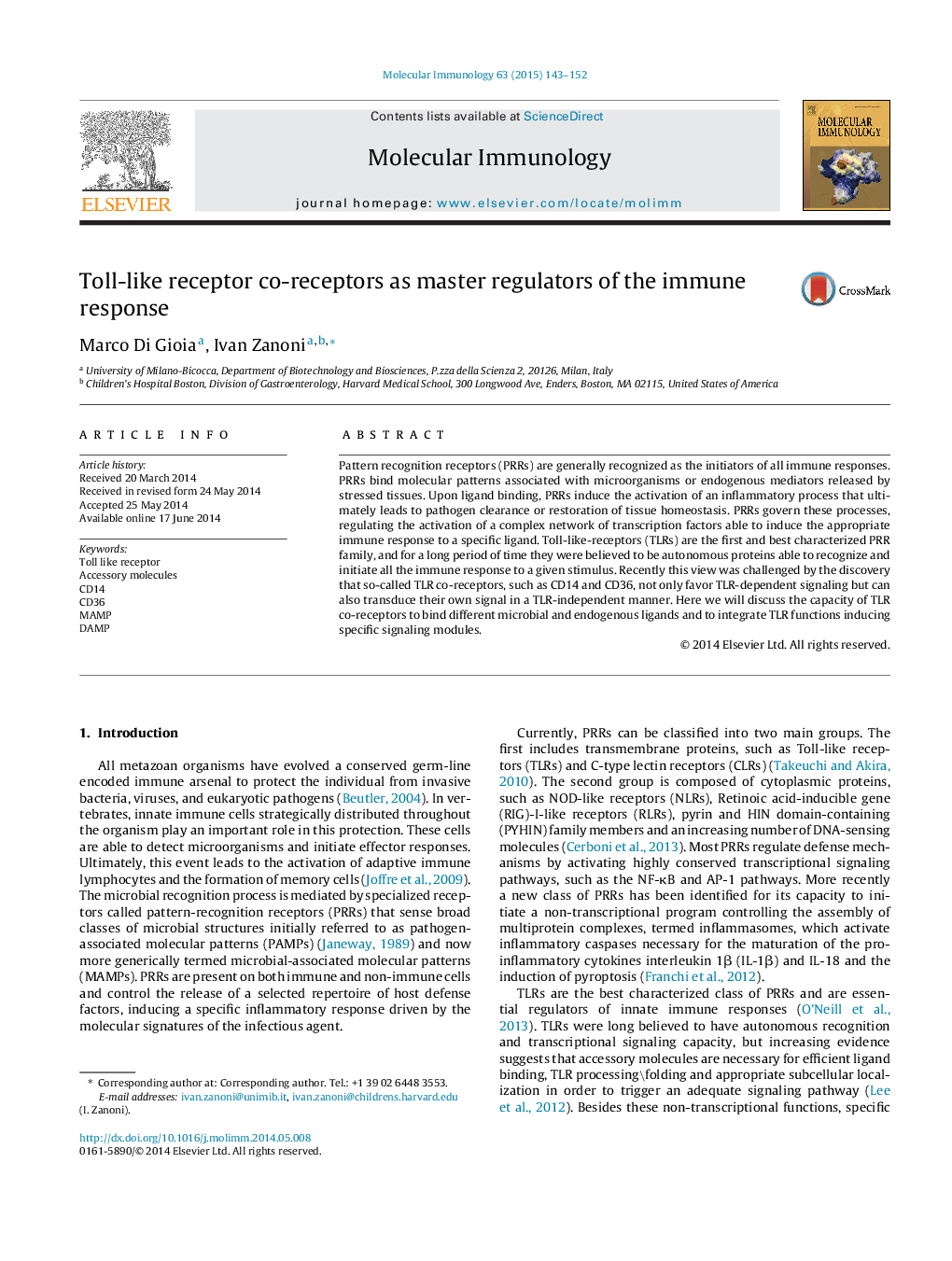| Article ID | Journal | Published Year | Pages | File Type |
|---|---|---|---|---|
| 2830696 | Molecular Immunology | 2015 | 10 Pages |
•Pattern recognition receptors are generally recognized as the initiators of all immune responses.•Recently so-called Toll-like receptor (TLR) co-receptors have been proven to transduce their own signal in a TLR-independent manner.•The capacity of CD14 to transduce two independent signaling pathways strongly impact on TLR4-mediated immune responses.•The capacity of CD36 to transduce a signal strongly influences physiological and pathological conditions.
Pattern recognition receptors (PRRs) are generally recognized as the initiators of all immune responses. PRRs bind molecular patterns associated with microorganisms or endogenous mediators released by stressed tissues. Upon ligand binding, PRRs induce the activation of an inflammatory process that ultimately leads to pathogen clearance or restoration of tissue homeostasis. PRRs govern these processes, regulating the activation of a complex network of transcription factors able to induce the appropriate immune response to a specific ligand. Toll-like-receptors (TLRs) are the first and best characterized PRR family, and for a long period of time they were believed to be autonomous proteins able to recognize and initiate all the immune response to a given stimulus. Recently this view was challenged by the discovery that so-called TLR co-receptors, such as CD14 and CD36, not only favor TLR-dependent signaling but can also transduce their own signal in a TLR-independent manner. Here we will discuss the capacity of TLR co-receptors to bind different microbial and endogenous ligands and to integrate TLR functions inducing specific signaling modules.
